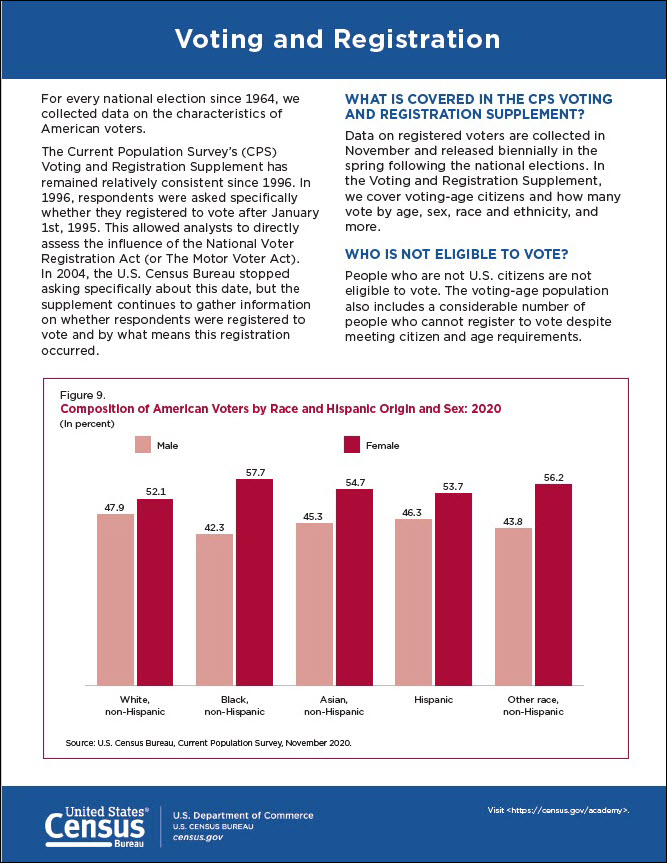Voting and Registration
For every national election since 1964, we collected data on the characteristics of American voters.
The Current Population Survey’s (CPS) Voting and Registration Supplement has remained relatively consistent since 1996. In 1996, respondents were asked specifically whether they registered to vote after January 1st, 1995. This allowed analysts to directly assess the influence of the National Voter Registration Act (or The Motor Voter Act). In 2004, the U.S. Census Bureau stopped asking specifically about this date, but the supplement continues to gather information on whether respondents were registered to vote and by what means this registration occurred.
What is covered in the CPS voting and registration supplement?
Data on registered voters are collected in November and released biennially in the spring following the national elections. In the Voting and Registration Supplement, we cover voting-age citizens and how many vote by age, sex, race and ethnicity, and more.
Who is not eligible to vote?
People who are not U.S. citizens are not eligible to vote. The voting-age population also includes a considerable number of people who cannot register to vote despite meeting citizen and age requirements.
Some people are not permitted to vote because they have been committed to the penal system, mental hospitals, or other institutions, or because they fail to meet state and local resident requirements for various reasons. Voter eligibility is governed by state laws, which differ from state to state.
Where can I find this data?
These data are part of the Current Population Survey (CPS), American Community Survey (ACS), and Survey of Income and Program Participation (SIPP). To access the list of tools available, go to our Data Tools and Apps. ACS data can be accessed on the data.census.gov tool. Other available information is accessible at Census Survey Explorer.




